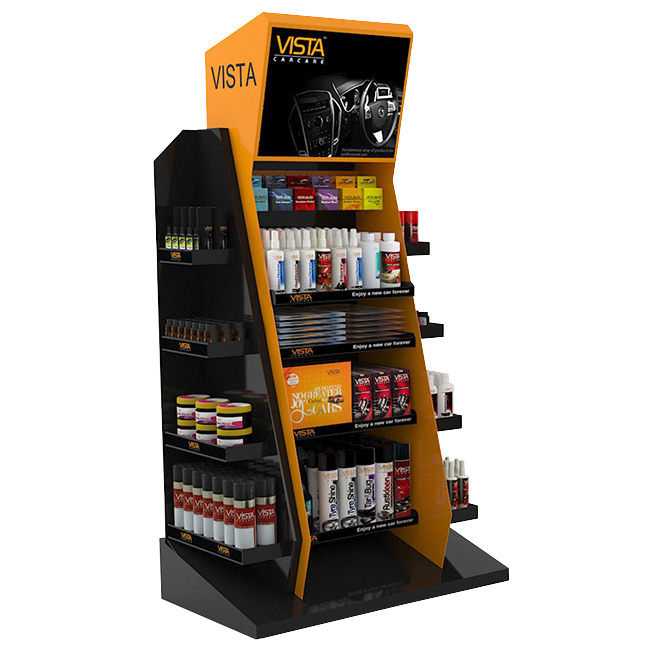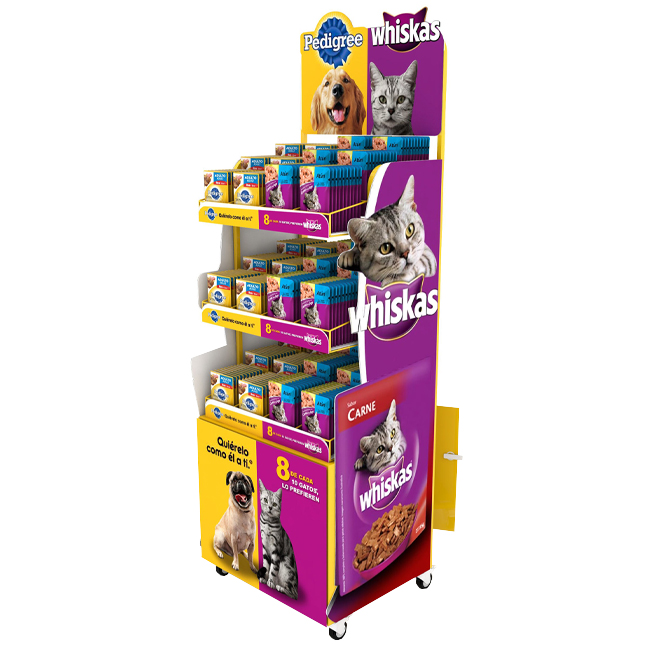Consumers may not take notice as they stock up on hot dogs and related condiments ahead of the July 4 holiday, but new research suggests the placement of these products in grocery store displays can be highly orchestrated to influence your buying decisions.
A sale on Ball Park franks, for example, might draw your attention to some neighboring spicy chicken sausages or even veggie dogs if you’re so inclined—but these items aren’t on sale. Before you know it, you’re heading out of the store with all three sets of links in tow. Stationery Display Rack

Two researchers affiliated with the Center for Research on Consumer Financial Decision Making at the Leeds School of Business studied how a sales promotion on one product influences the sales of other non-promoted products within a display.
Their findings, which are forthcoming in the Journal of Marketing, show that when consumers are drawn to attention-grabbing price promotions—such as an eye-level fluorescent sticker advertising two packs of hot dogs for one—their attention migrates to the items on each side of the product on sale.
“Your attention is drawn not only to that one product that’s on sale, but it also spills over to the products that are located nearby,” said Christina Kan, the lead author of the study, who received her Ph.D. in marketing from Leeds and continues to be affiliated with the center.
Shoppers then construct a “consideration set” made up of these products, Kan, now an assistant professor of marketing at the University of Connecticut, said. This increases the likelihood of the shopper buying the promoted item, and it also heightens their awareness of surrounding products, which can lead to more purchases—both planned and unplanned.
With limited time and attention, “consumers go into the store, and they do what’s easy. They don’t pay a lot of attention,” said Donald Lichtenstein, chair of the marketing division at Leeds and a co-author of the study. “Most purchases in a grocery store tend to be low-involvement for most consumers and they don’t scour the full shelf. So they buy what is low-effort, that being the promoted product and/or products located very proximal to the promoted product.”
A takeaway for shoppers? Realize that your attention is stretched when you’re in the grocery store. “If you want to save money, you should try searching the entire shelf rather than being drawn to whatever the grocery store manager wants you to look at,” Kan said.
The study offers lucrative implications for grocery retailers and marketers. The researchers, who also included Yan (Lucy) Liu, an associate professor of marketing at Texas A&M University’s May School of Business and Chris Janiszewski, a professor of marketing at Warrington College of Business Administration at the University of Florida, found that when a promoted product is located near a “strong substitute,” such as an identical product under a different brand, sales of the latter decrease.
“So if you have high-margin products (products that are particularly profitable for the retailer), you want to put those farther away from strong substitutes that are on promotion. For example, if one brand of hot dog is on sale, you’ll want to locate your high-margin dogs farther away from the sale dog,” Kan said.
The researchers also found that the promoted product will boost the sales of nearby products that are “weak substitutes.” They give the example of a regularly priced butter cookie experiencing increased sales thanks to its proximity to an on-sale almond cookie. The butter cookie essentially “benefits from the increased attention,” Lichtenstein said. If that same cookie brand is located farther away, say a few shelves down, it doesn’t enjoy the sales bump, he added.
Costco is one example of a retailer that appears to be implementing this strategy. The next time you’re shopping at Costco, notice how the store’s product promotions train you to go on a “treasure hunt” for sales on unique items that aren’t regularly stocked, Lichtenstein said.
When you find these deals, they are often located near products in other categories—including items that are not on sale—which allows Costco to “capture sales from people not interested in the discounted product,” according to the paper.
“When you go into Costco, your eyes are peeled because they have new things all the time,” Lichtenstein said. “Those new things are built-in ‘attention attractors.’ Now (Costco) could put high-margin items that they make more profit on right next to them. That real estate is valuable space.”
Submit a Story Editorial Guidelines
Faculty-Staff Email Archive Student Email Archive Graduate Student Email Archive New Buffs Email Archive Senior Class Student Email Archive Community Email Archive COVID-19 Digest Archive
CU Boulder Today is created by Strategic Relations and Communications.

Display Shelves Retail University of Colorado Boulder © Regents of the University of Colorado Privacy • Legal & Trademarks • Campus Map